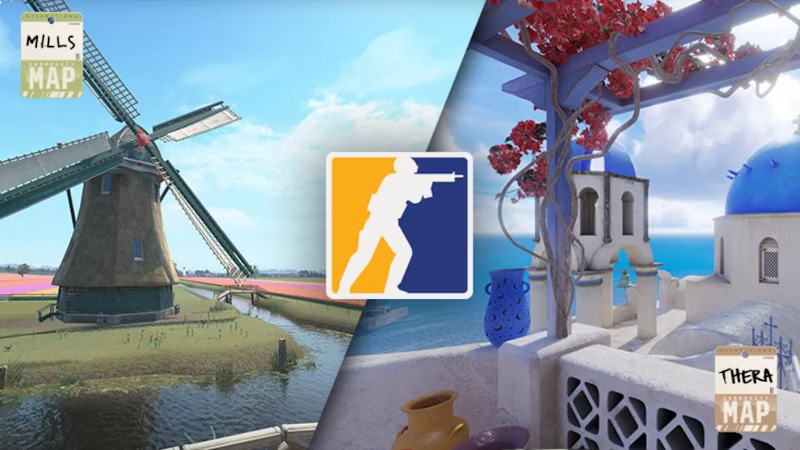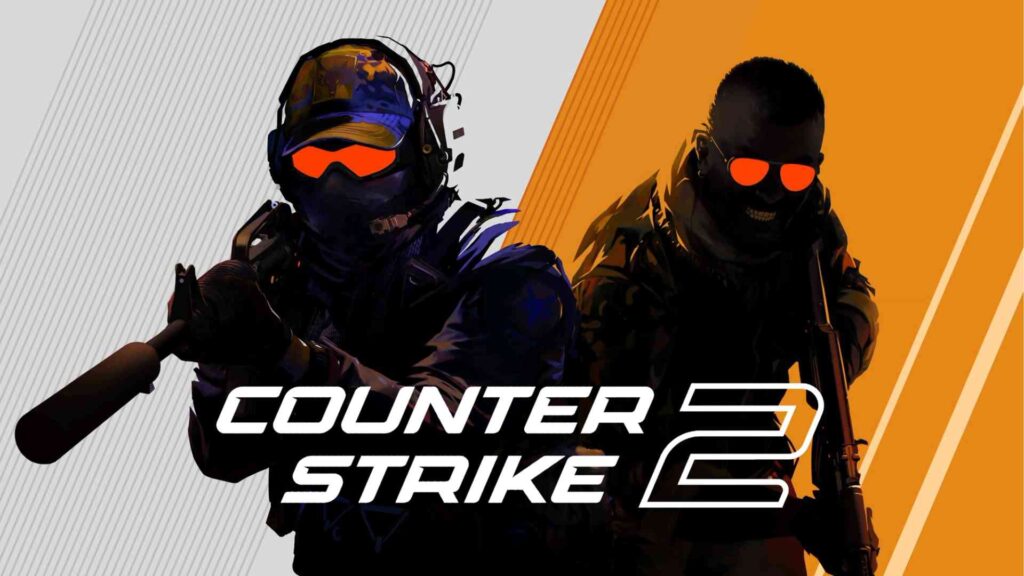Valve has recently rolled out an update for Counter-Strike 2, featuring an exciting addition of five community-made maps. These maps mark the first non-Valve creations to be officially integrated into the game since its release and its update from CS:GO.
Memento and Assembly have been added to Wingman, and Pool Day has been introduced to the Arms Race pool. However, despite high anticipation for new content to mark the 25th anniversary of Counter-Strike, only minimal changes have been implemented alongside the launch of these community maps.

‘Thera’, formerly known in CS:GO as ‘Santorini’, was created by Shawn ‘FMPONE’ Snelling, one of the designers of ‘Cache’. It is available in Competitive, Casual, and Deathmatch modes, along with Mills, created by ‘catfood’, the maker of Tuscan and Shipped maps.
In the latest update, the MVP panel has been revamped in all game modes, with new animated MVP panels introduced for Premier matches. The update also includes several new MVP conditions and adjustments to previous MVP rules.
In non-Premier competitive matchmaking, the number of wins required to display your map-specific skill group has been reduced from ten to two. Additionally, several video settings have been added, tweaked, or removed.
Contents
Complete List of Patch Notes
MAPS
Community Maps
- Added community maps Thera and Mills to Competitive, Casual, and Deathmatch map groups
- Added community maps Memento and Assembly to the Wingman map pool
- Added community map Pool Day to the Arms Race map pool
Nuke
- Fixed c4 stuck spots
Ancient
- Fixed c4 stuck spots, holes in the world, and non-solids causing problems
Vertigo
- Fixed c4 stuck spots and clipping
Anubis
- Fixes for grenade collision and clipping
UI
- Updated the MVP panel in all game modes
- Added all-new animated MVP panels to Premier matches
- Added several new MVP conditions and adjusted prior MVP rules
GAMEPLAY
- In Competitive Matchmaking, per-map skill groups are revealed after earning two wins on a map.
VIDEO SETTINGS
Settings Recommendations
- Added a Settings Recommendation popup if your display’s refresh rate is set below its maximum at startup. Using your display’s highest refresh rate is generally recommended.
- Added a Settings Recommendation popup if NVIDIA G-Sync support is detected but not enabled at startup. Using G-Sync is generally recommended if your system supports it.
- Added a Settings Recommendation popup if NVIDIA G-Sync is enabled but not V-Sync and/or NVIDIA Reflex. It is generally recommended to enable all three settings together when they are available. Applying these settings will limit your frame rate to your display’s refresh rate or slightly lower, usually the smoothest-looking and lowest input latency settings combination. Check out the link (technical details).
Other Video Settings
- Removed “Main Menu Background Scenery” and “Item Inspect Background Scenery” settings from the Video Settings page. These settings are still available on the Main Menu and in the Item Inspect screens, respectively.
- The “Refresh Rate” setting shows your display’s current refresh rate in the Windowed and Fullscreen Windowed modes.
- Removed the “Laptop Power Savings” setting, which has never been configurable in CS2.
- Added a “Frame Pacing” section to the Advanced Video settings page.
- I added an “NVIDIA G-Sync” row to the Frame Pacing section, which tells you whether or not G-Sync is active with your current display settings. This row may be hidden if you’re using the Vulkan renderer or if you’re not using an NVIDIA graphics card.
- Added “Maximum FPS In Game” and “Maximum FPS In Menus” sliders to the Frame Pacing section. These control the fps_max and fps_max_ui convars, respectively.
- Increased the default “Maximum FPS In Menus” setting from 120 FPS to 200 FPS.
- The Advanced Video visual preview now uses the “In Game” maximum FPS instead of the “In Menus” maximum.
Keep up with our coverage for more insights on the latest esports news and updates.


